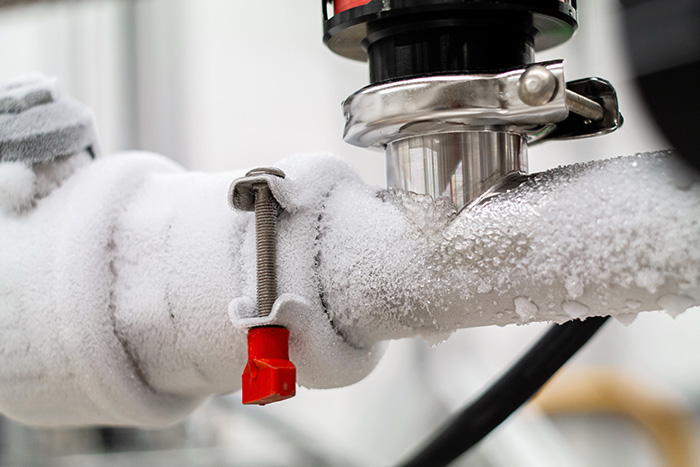Protecting Pipes from Freezing Damage: Essential Strategies
Protecting Pipes from Freezing Damage: Essential Strategies
Blog Article
Almost everyone is bound to have their own unique way of thinking about How to prepare your home plumbing for winter weather.

Winter can ruin your pipes, specifically by freezing pipelines. Below's just how to avoid it from occurring and what to do if it does.
Intro
As temperatures drop, the threat of icy pipes increases, possibly causing costly repairs and water damages. Comprehending how to prevent icy pipes is critical for house owners in cold environments.
Understanding Icy Pipes
What creates pipes to ice up?
Pipes freeze when exposed to temperature levels below 32 ° F (0 ° C) for prolonged durations. As water inside the pipelines freezes, it expands, putting pressure on the pipeline walls and potentially creating them to burst.
Dangers and problems
Icy pipelines can cause supply of water disruptions, residential or commercial property damages, and pricey repair work. Ruptured pipes can flooding homes and create comprehensive architectural damage.
Indications of Frozen Piping
Identifying icy pipes early can avoid them from rupturing.
Just how to identify frozen pipelines
Seek decreased water flow from faucets, unusual smells or sounds from pipes, and visible frost on exposed pipes.
Prevention Tips
Protecting prone pipelines
Cover pipelines in insulation sleeves or utilize warm tape to shield them from freezing temperature levels. Concentrate on pipelines in unheated or external locations of the home.
Heating methods
Keep interior rooms sufficiently heated, specifically areas with pipes. Open cupboard doors to allow cozy air to circulate around pipelines under sinks.
Safeguarding Exterior Plumbing
Garden pipes and outdoor taps
Separate and drain yard hoses prior to winter. Set up frost-proof faucets or cover outdoor faucets with shielded caps.
What to Do If Your Pipes Freeze
Immediate activities to take
If you believe frozen pipelines, keep faucets open up to soothe stress as the ice thaws. Make use of a hairdryer or towels taken in hot water to thaw pipelines slowly.
Long-Term Solutions
Structural modifications
Take into consideration rerouting pipelines far from outside walls or unheated areas. Add extra insulation to attics, basements, and crawl spaces.
Updating insulation
Buy high-grade insulation for pipelines, attic rooms, and wall surfaces. Appropriate insulation assists preserve constant temperatures and decreases the danger of frozen pipes.
Verdict
Protecting against icy pipes requires proactive actions and fast reactions. By understanding the causes, indicators, and safety nets, property owners can protect their pipes during winter.
5 Ways to Prevent Frozen Pipes
Drain Outdoor Faucets and Disconnect Hoses
First, close the shut-off valve that controls the flow of water in the pipe to your outdoor faucet. Then, head outside to disconnect and drain your hose and open the outdoor faucet to allow the water to completely drain out of the line. Turn off the faucet when done. Finally, head back to the shut-off valve and drain the remaining water inside the pipe into a bucket or container. Additionally, if you have a home irrigation system, you should consider hiring an expert to clear the system of water each year.
Insulate Pipes
One of the best and most cost-effective methods for preventing frozen water pipes is to wrap your pipes with insulation. This is especially important for areas in your home that aren’t exposed to heat, such as an attic. We suggest using foam sleeves, which can typically be found at your local hardware store.
Keep Heat Running at 65
Your pipes are located inside your walls, and the temperature there is much colder than the rest of the house. To prevent your pipes from freezing, The Insurance Information Institute suggests that you keep your home heated to at least 65 degrees, even when traveling. You may want to invest in smart devices that can keep an eye on the temperature in your home while you’re away.
Leave Water Dripping
Moving water — even a small trickle — can prevent ice from forming inside your pipes. When freezing temps are imminent, start a drip of water from all faucets that serve exposed pipes. Leaving a few faucets running will also help relieve pressure inside the pipes and help prevent a rupture if the water inside freezes.
Open Cupboard Doors
Warm your kitchen and bathroom pipes by opening cupboards and vanities. You should also leave your interior doors ajar to help warm air circulate evenly throughout your home.

As a serious reader about Prevent Frozen Pipes , I think sharing that portion was really useful. You should set aside a second to distribute this blog post if you appreciated it. We appreciate your readership.
Book Today Report this page